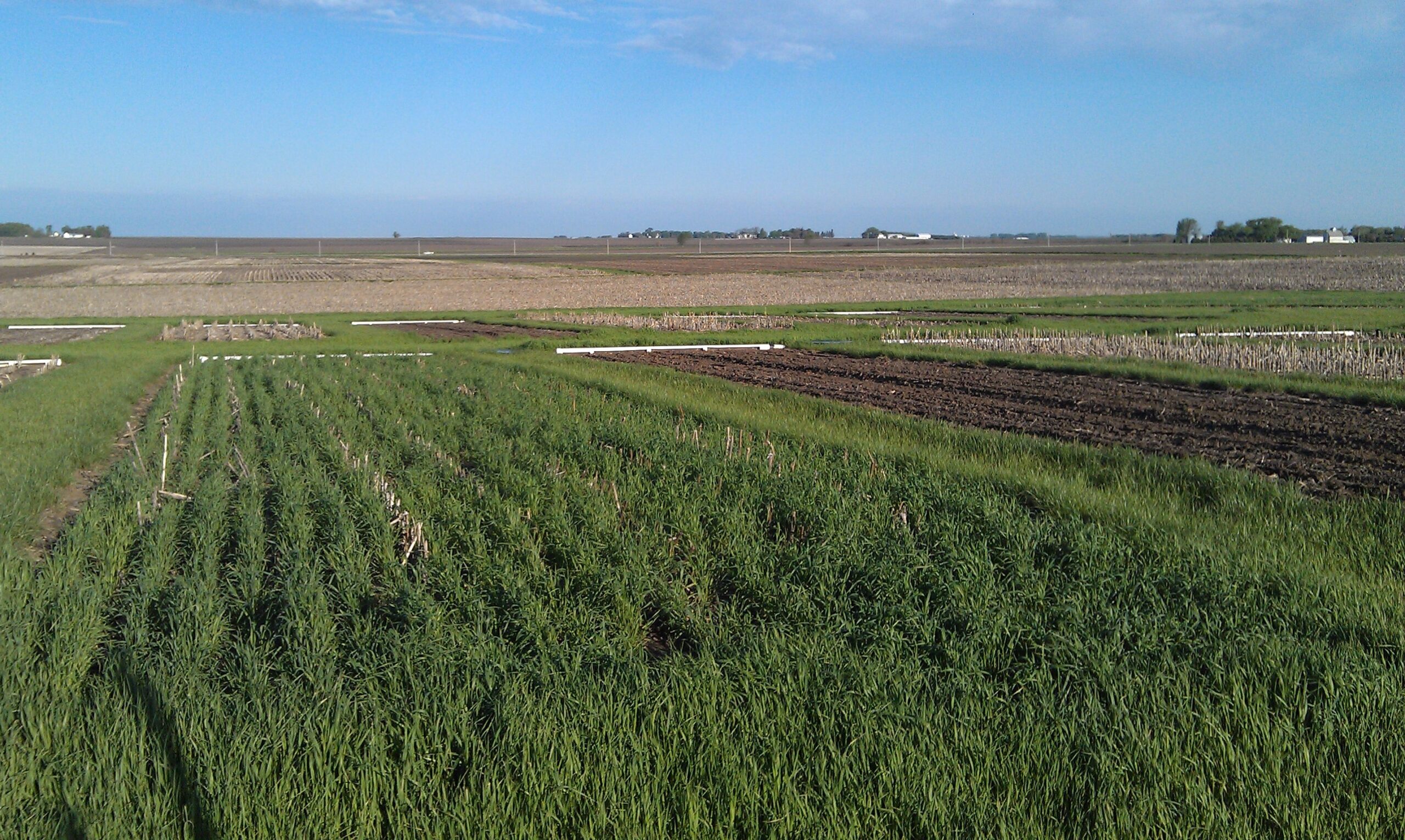
A research project by Iowa State University soil scientists provides new insight into the complex picture of phosphorus loss from farmland and evidence proving phosphorus runoff is often underestimated.
One of the project’s primary objectives was to determine how much dissolved phosphorus (P) in surface runoff may not be accurately measured by common methods. The work was conducted over three years with funding from the Iowa Nutrient Research Center at Iowa State.
“Conventional views of P loss are that most of it is tightly bound to soil particles, so P is not a problem as long as erosion is controlled. Our study shows this is not necessarily the case,” said Antonio Mallarino, professor of agronomy and ISU Extension and Outreach soil fertility and nutrient management specialist. He led the project, working with Mazhar U. Haq, research specialist in agronomy, and former graduate student John D. Jones, Jr.
Mallarino’s team used soil and surface runoff samples from several Iowa field experiments. From these samples, they measured P loss from corn and soybean fields that had different soils, P sources, tillage management and conservation practices. Their findings provide new knowledge and confirm a growing body of research nationally that shows more P leaves fields dissolved in runoff than expected. And that some conservation practices may not reduce – or may even increase — dissolved P loss.
“All the P that leaves the field is potentially important,” Mallarino said. “However, dissolved P is in a form that is highly bioavailable, so it is of particular concern for its contribution to eutrophication of freshwater and coastal waters and harmful algal blooms.”
Measurement
Phosphorus is characterized in a number of ways, and there are different approaches to monitoring where and how it shows up in the environment. Another one of the team’s primary research objectives was to compare measurement methods to better understand how P and its different forms can most accurately be estimated.
“Classic methods to test for runoff total bioavailable P have been complicated, time-consuming and expensive to use,” Mallarino said.
A significant achievement of this research has been to show that the common measurement of dissolved reactive P (DRP) in runoff often significantly underestimates loss of total dissolved and bioavailable P, according to Mallarino.
Furthermore, he said, the research demonstrated that a simple test of total dissolved P performed on filtered runoff with inductively coupled plasma (ICP) spectrometry, provides comparable results to other methods for measuring total dissolved or bioavailable P, and is much cheaper and easier to conduct.
“This part of our work should help inform – and improve — efforts to track total dissolved P loss from soils,” Mallarino said.
Management

Another major objective has been to refine knowledge and guidelines for best management practices to reduce dissolved P loss with runoff. The researchers looked at the influence of different tillage systems and P sources, as well as potential benefits from cover crops and use of two soil amendments, alum and gypsum, thought to reduce P loss.
What they found showed that applying P beyond the amount needed by crops drastically increases dissolved P loss. In addition, no-till management increased the proportion of total P loss comprised of dissolved and bioavailable forms, reflecting findings from some other long-term research efforts, especially in the Great Lakes region.
With tillage to incorporate the fertilizer or manure, the proportion of dissolved P in runoff was smallest where solid poultry manure was applied and larger after fertilizer or liquid swine manure. With no-till, however, the proportion of dissolved P loss was highest for fields where fertilizer was applied. Where manure was applied to no-till fields, loss did not significantly differ based on the type of manure — probably because swine manure was injected into the soil, according to Mallarino.
Using a winter cereal rye cover crop reduced all the forms of dissolved P in runoff — in contrast to a study in the Great Plains that showed an increase in dissolved reactive P loss where cover crops were used. The Iowa research showed benefits from cover crops for fields managed with both tillage and no-till.
Of the two soil amendments tested, only the aluminum sulfate (alum), consistently reduced the loss of dissolved and bioavailable P.
“This work to better understand the forms of P loss is critically needed as we work to reduce loss to downstream water bodies,” said Iowa Nutrient Research Center Director Matt Helmers. “It highlights the importance of dissolved P loss and the need to better understand the impact of conservation practices on dissolved P.”
Complex Interactions
Mallarino and his team have a final report with more details posted on the Iowa Nutrient Research Center website. They are also working on other publications to highlight specific aspects of their long-term research and suggest next steps.
“Soils, rainfall, management and other factors interact in complex ways that mediate P movement from fields,” Mallarino said. “Even so, the best advice still is to avoid overloading soils with P. Reduce the amount of P in fertilizer and manure applications to optimal levels needed by crops and use the Iowa P index to monitor the risk of loss when using nitrogen-based manure application rates. Otherwise, our research confirms that excess accumulated P is going to move off fields. Just how much will depend on rainfall and conservation practices.”
Antonio Mallarino will be presenting “Performance of In-field Practices at Reducing Dissolved and Particulate Phosphorus Loss” for the Iowa Nutrient Research Center’s Spring Water Quality Research Seminar series, March 23, at 3:10 p.m. Find more information or register at: https://go.iastate.edu/FGQX5D.




